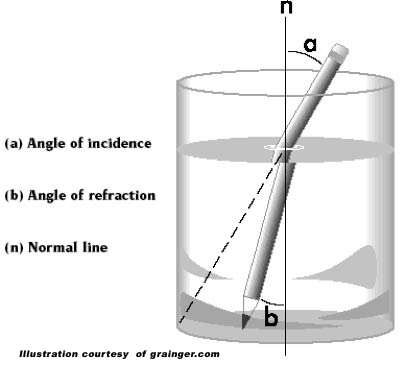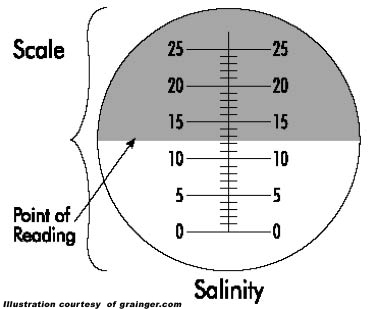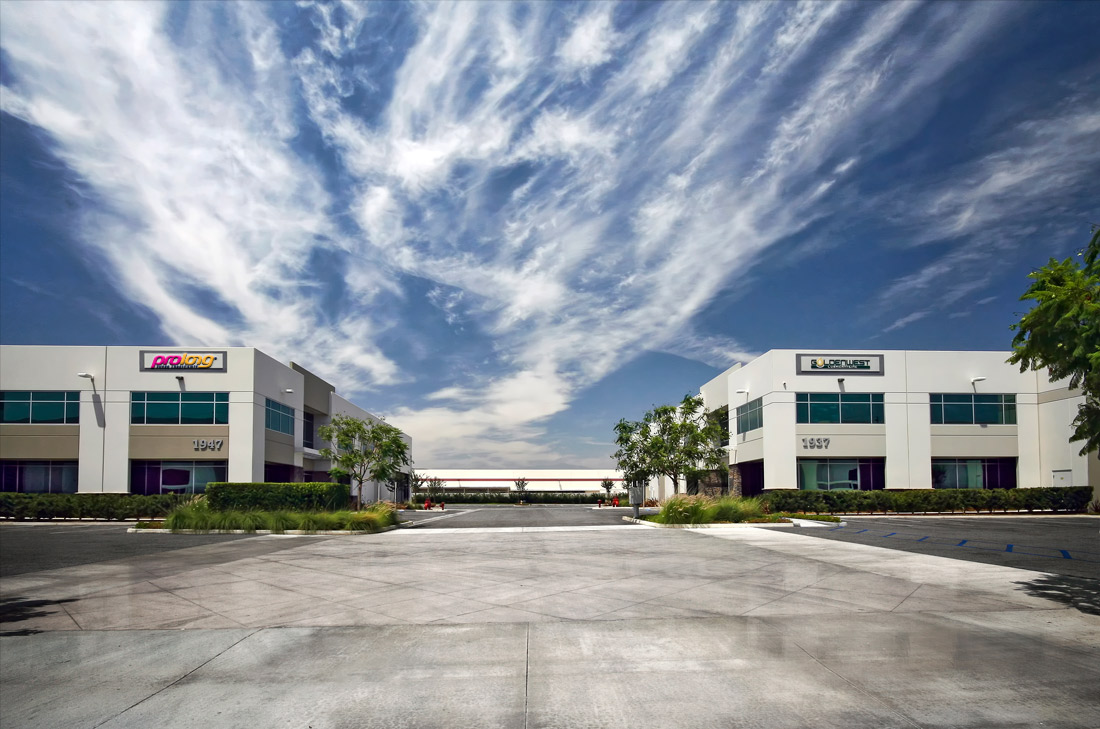How to Use a Refractometer
A refractometer is used to determine a concentration of a particular substance within a given solution. It operates based on the principle of refraction. When rays of light pass from one medium into another, they are bent either toward or away from a normal line between the two media. The angle between the normal ray and the refracted ray is called the angle of refraction. The Figure below demonstrates this using a pencil resting in a container of water. As you can see, the light ray passes from the air into the water and is bent toward the normal ray or the angle of incidence.

The angle of refraction is related to an index value called the index of refraction. Each compound has a specific index of refraction. The angle of refraction is dependent on the composition of the media and on the temperature. This composition dependency is what makes refractometers so useful. As the concentration of a particular compound in a solution increases, so does the degree to which the light is bent. Also, it is important to determine the temperature of the testing environment since temperature affects the angle of refraction.
As an example, refractive light can be used to determine the sodium chloride (NaCl) concentration/salinity in a brine solution. For each percent salinity value, there is a corresponding angle of refraction. That angle of refraction is converted to percent salinity. This percentage is the concentration of NaCl in the brine solution. To make the conversion easier, refractometers are available with scales that are calibrated to read the desired value, in this case, percent salinity.
Types of Refractometer
Handheld Analog Refractometer
With an analog refractometer, the sample is place on a cover plate and a prism and then held to the light to view the scale inside the meter.
Handheld Digital Refractometer
Digital refractometers require a drop of the tested solution to be placed in a well. That well is illuminated by a light source, usually an LED light and the meter interprets the light transmission into refractive index or whatever unit of measure the instrument is programmed to read.
Abbe (Laboratory) Refractometer
Abbe Refractometers are bench-top meters that look similar to a microscope which provide highly precise measurements of refractive index.
Refractometers are available with a variety of scales:
- Salinity Measures sodium chloride solutions
- Brix Measures percent sucrose. Used in the food and beverage industry for quality control
- Coolant Freezing Point Determines the effectiveness of ethylene glycol and propylene glycol coolants
- Clinical: Measures Serum albumen and urine-specific gravity (e.g. to test for urine drug sample tampering)
- Specific Gravity Measures density of a liquid in relation to the density of water, which has a specific gravity of 1.
Calibration and Use of Analog Refractometers
- Calibrate the refractometer with a standard solution before use. Since the reading will be affected by temperature changes, it is best to calibrate at the temperature of the test environment. If this is not possible, correction charts may be used. Some refractometers have automatic temperature correction (ATC), a feature that allows the instrument to automatically correct for temperature differences.
- Place a small amount of liquid (usually 2–5 drops) on the prism and secure the cover plate. This will evenly distribute the liquid on the prism.
- Point the prism end of the refractometer toward a light source and focus the eyepiece until the scale is clearly visible.
- Read the scale value at the point where the dark and light portions meet. Below is an example of a salinity scale as seen through the eyepiece:

Commonly Asked Questions
Q. I need to test the concentration of lubricating oil but I have a Brix refractometer. Can I use it?
A. Yes, you can use it if the refractive range is similar. In this case, you need to prepare known samples of the lubricating oil and determine the corresponding Brix values. From this data, a chart can be created to convert from the Brix value to the percent oil value.
Q. How do I maintain a refractometer?
A. Refractometers require very little maintenance. When the measurement is complete, wipe the prism with a soft lens tissue. When the instrument is not in use, keep the cover closed to avoid scratching the prism.
Sources for More Information
Reichert Refractometer Reference Guide
Reichert Technical Bulletin Determining Percent Concentration of Samples

